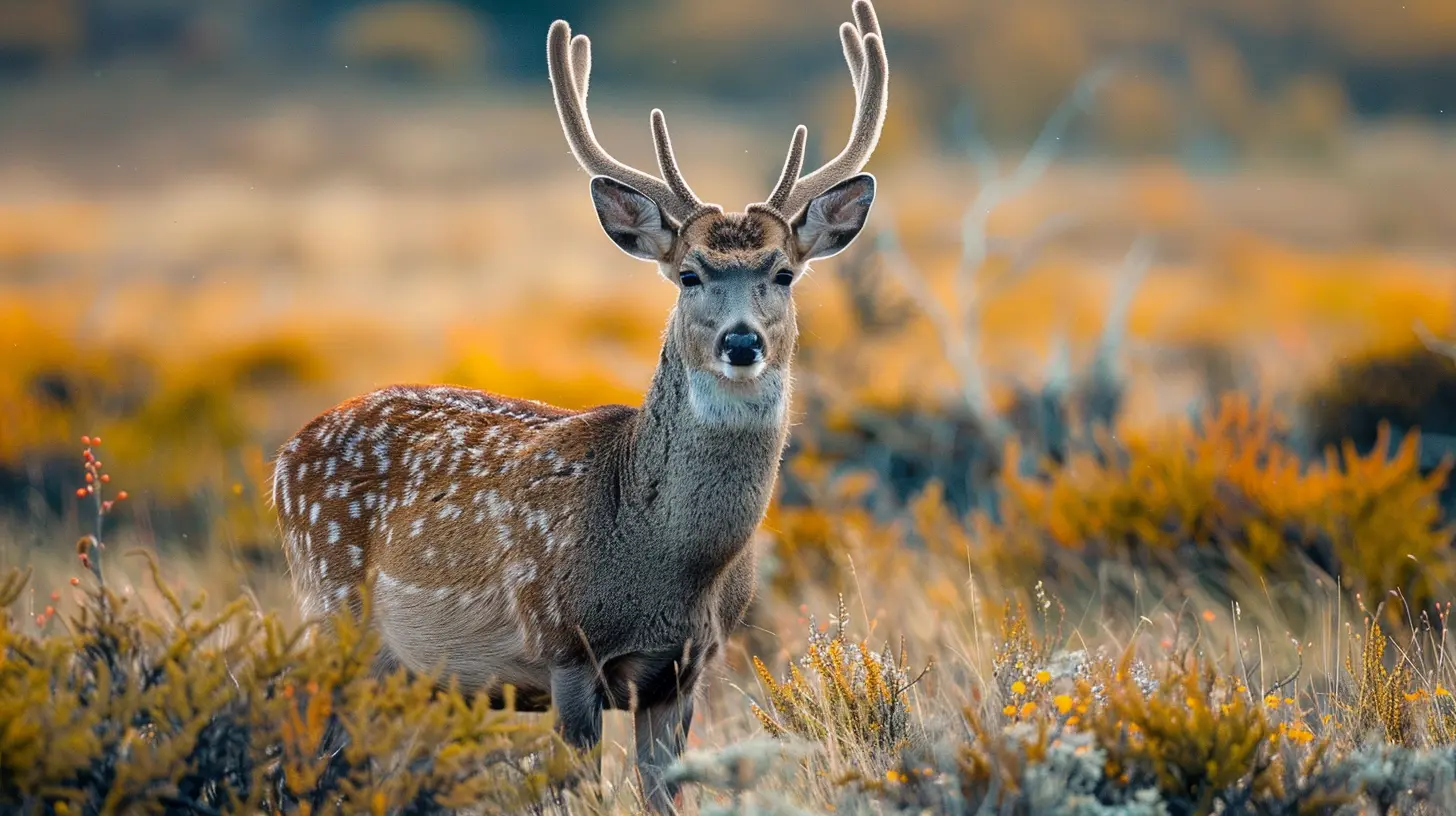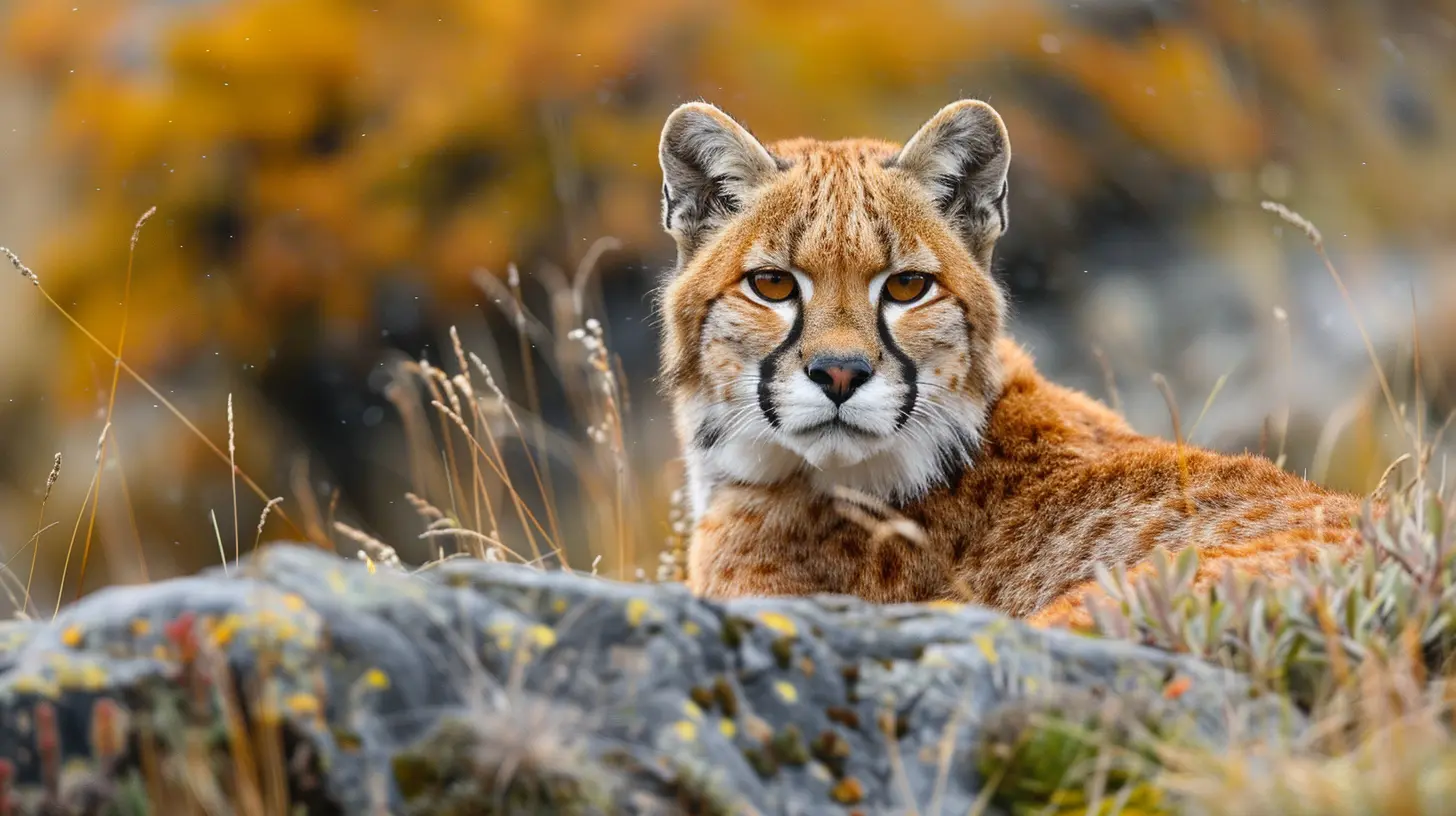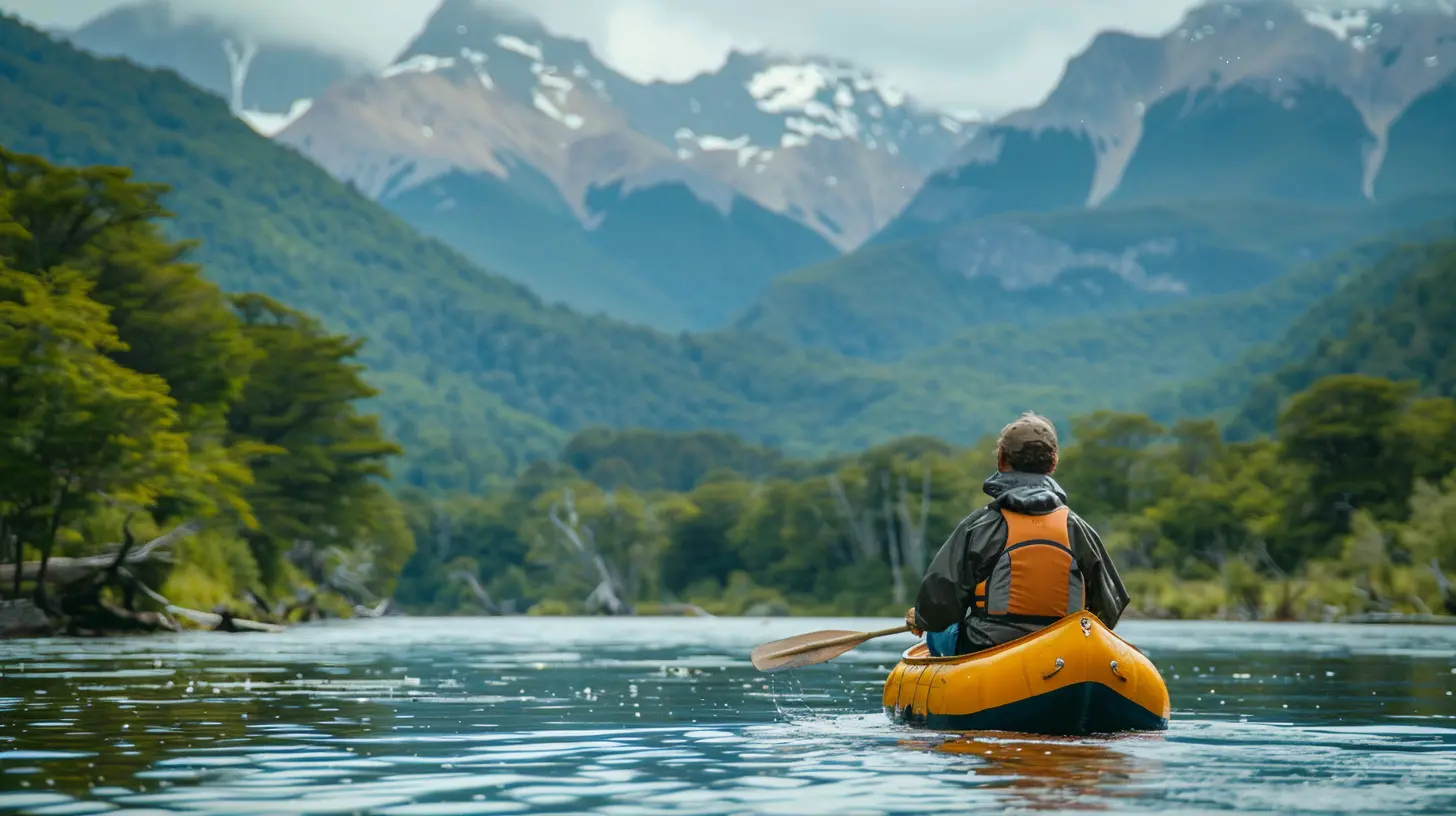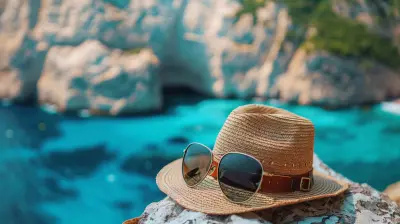The Wilds of Patagonia: Discovering South America's Hidden Creatures
11 August 2025
When you hear the word "Patagonia," what springs to mind? Towering glaciers? Wind-swept steppes? Maybe that iconic brand tagging your favorite puffer jacket? Patagonia is all of that—but it’s also a living, breathing kingdom of mystery. A place where creatures, both shy and spectacular, roam vast landscapes so untouched they look like Earth before humans.
What if I told you that South America's southern tip holds some of the most elusive animals on the planet? Let’s buckle up and head deep into the wilds of Patagonia. Not just for the jaw-dropping landscapes you know from Instagram, but to meet the quiet residents who’ve called it home forever.

Welcome to Patagonia: A Land Like No Other
Patagonia stretches across the southernmost stretches of Argentina and Chile. It’s a land of paradox—both desolate and rich, icy and sunburned, harsh and magical. Think endless plains, jagged peaks, glacial lakes, and emerald forests.And nestled within all that rugged beauty? Wildlife that seems like it stepped out of a fantasy novel. Whether you're a seasoned eco-traveler or just someone who loves jaw-dropping nature stories, the creatures of Patagonia will absolutely blow your mind.

Meet the Loner: The Andean Puma
You’ve probably heard of the puma, but did you know Patagonia is basically its VIP lounge? The Andean puma, often called the "ghost of the Andes," may just be one of the wildest cats you'll never see. Why? Because it’s elusive, stealthy, and thrives in Patagonia’s wide-open spaces.But trust me, it’s there. Pumas roam the steppe and mountains in Torres del Paine National Park. If you're lucky (and very quiet), you might catch a glimpse of one tracking a herd of guanacos. Locals say spotting a puma is like winning the wildlife lottery.
Fun fact: In Patagonia, pumas face fewer predators and human threats than in other regions, making it one of the best places in the world to spot them… if you have the patience.

The Guanaco: The Camelid You've Been Sleeping On
Ever seen a llama’s slightly cooler cousin? That’s the guanaco. These long-necked wonders are everywhere in Patagonia, grazing gracefully across the windswept plains and bouncing like kangaroos when startled.They're surprisingly photogenic, with curious eyes and long lashes. But here’s the kicker—they’re essential to the local ecosystem. Guanacos are primary prey for pumas and play a huge role in seed dispersal across the region.
Coolest part? When guanacos sense danger, they emit a high-pitched warning call that's straight-up eerie. It's like the Patagonia version of a neighborhood watch.

The Mysterious Huemul: Patagonia's National Treasure
The huemul, or South Andean deer, is so shy it’s practically mythical. This endangered species is Chile’s national animal, yet even many locals have never seen one in the wild. Think of it as Patagonia’s unicorn.These stocky deer live deep in the Andean forests. They’re masters of camouflage and often travel in pairs. Spotting a huemul in the wild is beyond rare—it’s a privilege. So if you manage to see one while hiking the remote trails of Los Glaciares or Nahuel Huapi National Park, consider yourself part of an exclusive club.
Unfortunately, the huemul faces threats from habitat loss, human encroachment, and introduced species. Conservation efforts are ongoing, and eco-tourism can actually help by raising awareness and funds.
Birds of a Feather: Patagonia's Avian Delights
Ask any birder, and they’ll say Patagonia is paradise. Whether you're a passionate ornithologist or just someone who likes colorful feathers, you’re in for a treat.The Andean Condor: Sky Royalty
With a wingspan up to 10 feet, the Andean condor is the king of the sky. These graceful gliders ride thermal updrafts above the cliffs, barely flapping as they soar across the mountain ridges. They’re scavengers, yes—but don't judge. Their presence is vital for keeping the ecosystem clean.You’ll often spot them in high-altitude regions—El Chaltén, for instance—a favorite hiking hub nestled in Argentina’s Fitz Roy range.
The Magellanic Woodpecker: Patagonia's Drummer
This oversized woodpecker looks like it auditioned for a rock band. With a fiery red head and a hammering beak, the male Magellanic woodpecker is hard to miss. You’ll hear the rhythmic knock-knock-knock echoing through the lenga forests long before you catch sight of one.These birds are incredibly intelligent and pair for life. In fact, when one member of the pair dies, the other often mourns. Something poetic about that, right?
Flamingos in the Snow?
Yep, flamingos live here. Specifically, the Chilean flamingo. It’s a surreal sight—these leggy, pink creatures wading through icy lagoons with snow-capped mountains in the background. Nature has a wicked sense of style.
Hidden in the Shadows: Lesser-Known Inhabitants
While the stars like pumas and condors steal the spotlight, let’s not forget the underdogs. Patagonia has a whole cast of lesser-known animals that are just as fascinating.The Patagonian Armadillo: Nature's Tank
This armored little guy, also known as the pichi, looks like a Pokémon. It’s short, stocky, and surprisingly quick when it wants to disappear. They burrow into the ground and have thick, bony plates to protect themselves from predators.You’re more likely to see one at dawn or dusk, snuffling through the brush in search of insects. They’re like the night shift of Patagonia’s wildlife world.
The Kodkod: The Cat You've Never Heard Of
Pronounced “code-code,” this tiny wildcat may be the smallest in the Americas, but it’s a fierce little predator. It prefers dense forests and is rarely spotted, even by researchers. It’s sort of like the ninja of feline species—silent, sneaky, and seldom seen.This is one of those animals that remind us there’s so much still hidden in plain sight. Just because we've got GPS and drones doesn’t mean we’ve discovered it all.
Wildlife Watching Tips: How to See Without Scaring
Okay, so now you're dying to see these creatures for yourself, right? Awesome. But let’s not forget—we’re guests in their home. Here are a few tips to keep things ethical and impactful:- Hire a local guide: Not only do they know where to look, but they can also spot animal behavior you’d never notice.
- Keep your distance: Use binoculars or a zoom lens. Getting too close stresses the animals out—and can be dangerous.
- Stay on the trail: It helps preserve delicate ecosystems and keeps everyone (you included) safe.
- Be quiet: Patagonia is all about stillness. The more you blend in, the more you’ll see.
Best Places to Spot Patagonia's Wildlife
Here’s where Patagonia turns into a real-life Animal Planet episode:- Torres del Paine National Park (Chile): For pumas, guanacos, foxes, and condors.
- Valdés Peninsula (Argentina): For marine wildlife—think sea lions, elephant seals, and even orcas.
- Los Glaciares National Park (Argentina): For everything from condors to hidden huemuls.
- Tierra del Fuego: For possible sightings of the elusive Andean fox and southern river otters.
When to Visit for the Best Wildlife Watching
Timing is everything. Visit Patagonia during the Southern Hemisphere’s summer months—between November and March—for the best weather and higher animal activity. Some migratory birds, like the flamingo, are more active during these months, and it’s also easier to travel around.Just brace yourself for the wind. Patagonia’s gusts are legendary. Backpack fly away? Totally possible.
Travel Smart: Sustainability Matters
Patagonia’s pristine nature is both its greatest asset and its most vulnerable feature. The region is undergoing subtle yet steady change due to climate shifts and increased tourism.So what can you do? Choose eco-lodges. Go with locally-run tour operators. Pack out what you pack in. And educate yourself before you go. Every small action helps preserve this wild wonderland for future adventurers.
Final Thoughts: Patagonia’s Creatures Are Calling
Patagonia isn’t just a destination—it’s a feeling. A deep, exhilarating awe that hits you when you glance across a windswept valley and realize you're not alone. Something’s out there, watching. Waiting. Living in harmony with the kind of nature most of us only dream about.From the majestic Andean puma to the absurdly cute Patagonian armadillo, each creature plays a role in the intricate dance of life at the end of the world. So if your soul stirs for wild things and untamed places—maybe it’s time to answer that call.
Nature doesn’t come rawer, rougher, or more real than this.
all images in this post were generated using AI tools
Category:
Wildlife EncountersAuthor:

Ian Powell
Discussion
rate this article
2 comments
Kason McConnell
This article beautifully captures Patagonia's unique wildlife, inspiring adventure and appreciation for South America's stunning natural treasures. Well done!
November 29, 2025 at 5:59 AM
Sabrina Harper
Patagonia's breathtaking landscapes are home to a diverse array of wildlife, from the majestic guanaco to the elusive Andean condor. Eco-tourism here offers unique opportunities to observe these hidden creatures in their natural habitats, making it an unforgettable adventure for nature enthusiasts. Don’t miss it!
August 15, 2025 at 4:02 AM

Ian Powell
Thank you for highlighting Patagonia's incredible wildlife and eco-tourism opportunities! It's truly a paradise for nature lovers.


